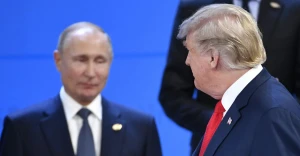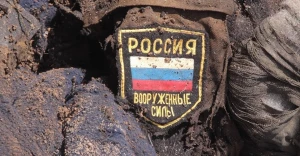
Russian howitzers' barrels are bursting: are only DPRK shells to blame?
Despite the systematic defects in ammunition from the DPRK, Russia's problems with artillery are much deeper than just defective shells, as the artillery is worn out
Ukrainian Defense Express media and consulting company reports.
Russian artillerymen are increasingly complaining about exploding artillery barrels, and another photo of a torn Russian D-30 howitzer has appeared online.
It is impossible to establish the exact time and place of the filming. At the same time, it is noted that the cause of the explosion could be ammunition that Russia began to urgently receive from the DPRK.
Prior to that, there was information that these munitions showed an abnormal spread, and there were even photos of a rather small sample of charges for them that showed massive defects. In fact, five selected charges with the same markings had different powder, different weights, sealing failures, and the absence of a separator.
At the same time, the reasons for the explosion of the shell in the barrel channel, which is what was recorded in the new photos with two Russian D-30s, are listed in the methodological literature on the ammunition itself: insufficient strength of the walls or bottom of the shell body, insufficient obturation of powder gases in the bottom of the shell, poor quality of the explosive in the shell, metal defects, and a defective detonator.
And it is quite possible to put a “tick” in front of each of these points in relation to shells from the DPRK. However, barrel wear must also be added to this.
“The first cases of media coverage of barrel ruptures in the Russian army appeared in the spring of 2023, at a time when there was no talk of shells from the DPRK. And the reason for this was called heavy wear of the barrels, which leads to defects in the barrel channel, which also causes the shell to rupture in the barrel,” Defense Express analysts note.

Russia's P2S3 self-propelled howitzer. Photo: Defense Express
Especially when it comes to the fact that Russia is removing old Soviet artillery systems from decommissioning, which have been standing in the open for decades and have obviously reached the end of their useful life. But lately, there have been a lot of photos of torn Russian artillery systems.But rather, the DPRK shells have become only an element of a systematic global problem that increases the chances of self-destruction of Russian artillery. At the same time, the enemy has no way out of this situation, because the greater the wear on the barrel, the lower the accuracy, which means that more shots need to be fired, leading to even greater wear.
“That is, despite Russia's belief that North Korean shells are to blame, the problem is actually much bigger and more complex. And its solution is beyond Russia's ability to produce the required number of new artillery systems from scratch,” Defense Express concludes.
- News












































